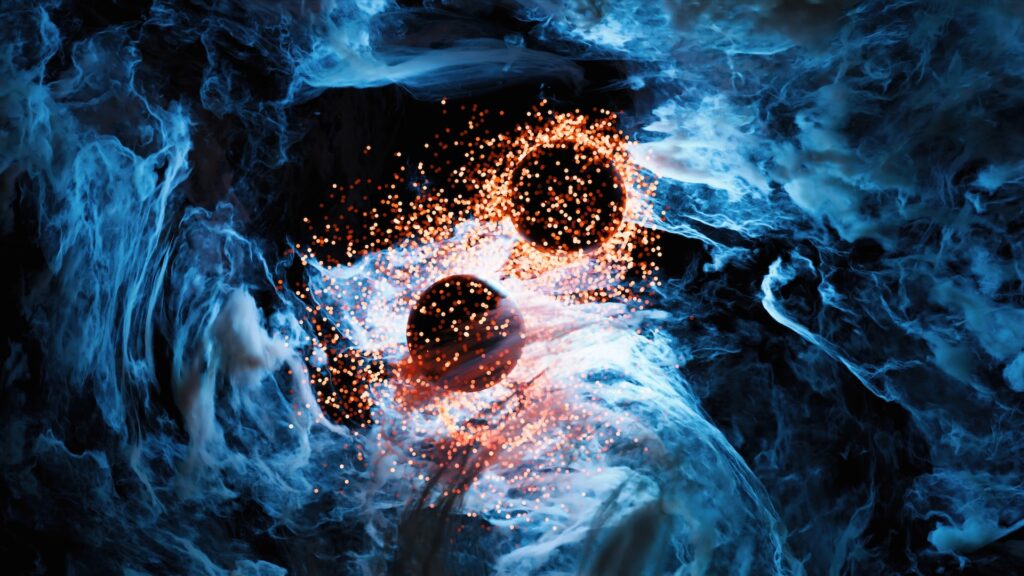
Physicists have developed a novel approach to solving one of the most persistent problems in theoretical physics: uniting gravity with the quantum world.
In a recent paper published in the journal Reports on Progress in Physics, the scientists outline a reformulation of gravity that could lead to a fully quantum-compatible description — without invoking the extra dimensions or exotic features required by more speculative models, like string theory.
At the heart of the proposal is a rethinking of how gravity behaves at a fundamental level. While the electromagnetic, weak and strong forces are all described using quantum field theory — a mathematical framework that incorporates uncertainty and wave-particle duality — gravity remains the outlier. General relativity, Einstein’s theory of gravity, is a purely classical theory that describes gravity as the warping of space-time geometry by mass and energy. But attempts to blend quantum theory with general relativity often run into fatal mathematical inconsistencies, such as infinite probabilities.
The new approach reinterprets the gravitational field in a way that mirrors the structure of known quantum field theories. “The key finding is that our theory provides a new approach to quantum gravity in a way that resembles the formulation of the other fundamental interactions of the Standard Model,” study co-author Mikko Partanen, a physicist at Aalto University in Finland, told Live Science in an email.
Instead of curving space-time, gravity in their model is mediated by four interrelated fields, with each one similar to the field that governs electromagnetism. These fields respond to mass in much the same way that electric and magnetic fields respond to charge and current. They also interact with each other and with the fields of the Standard Model in a way that reproduces general relativity at the classical level while also allowing quantum effects to be consistently incorporated.
Related: ‘Einstein’s equations need to be refined’: Tweaks to general relativity could finally explain what lies at the heart of a black hole
Because the new model mirrors the structure of well-established quantum theories, it sidesteps the mathematical problems that have historically hindered efforts to quantize general relativity. According to the authors, their framework produces a well-defined quantum theory that avoids common problems — such as unphysical infinities in observable quantities and negative probabilities for physical processes — that typically arise when general relativity is quantized using conventional, straightforward methods.
A key advantage of the approach is its simplicity. Unlike many models of quantum gravity that require undetected particles and additional forces, this theory sticks to familiar terrain.
“The main advantages or differences in comparison with many other quantum gravity theories are that our theory does not need extra dimensions that do not yet have direct experimental support,” Jukka Tulkki, a professor at Aalto University and co-author of the paper, told Live Science in an email. “Furthermore, the theory does not need any free parameters beyond the known physical constants.”
This means the theory can be tested without waiting for the discovery of new particles or revising existing physical laws. “Any future quantum gravity experiments can be directly used to test any (forthcoming) predictions of the theory,” Tulkki added.
Looking ahead
Despite the promising features, the model is still in its early stages. Although preliminary calculations indicate that the theory behaves well under the usual consistency checks, a complete proof of its consistency remains to be worked out.
Moreover, the framework has yet to be applied to some of the deepest questions in gravitational physics, such as the true nature of black hole singularities or the physics of the Big Bang. “The theory is not yet capable of addressing those major challenges, but it has potential to do so in the future,” Partanen said.
Experimental verification may prove even more elusive. Gravity is the weakest of the known forces, and its quantum aspects are incredibly subtle. Direct tests of quantum gravity effects are beyond the reach of current instruments.
“Testing quantum gravity effects is challenging due to the weakness of gravitational interaction,” Tulkki said. Still, because the theory includes no adjustable parameters, any future experiment that probes quantum gravitational behavior could potentially confirm — or rule out — the new proposal.
“Given the current pace of theoretical and observational advancements, it could take a few decades to make the first experimental breakthroughs that give us direct evidence of quantum gravity effects,” Partanen said. “Indirect evidence through advanced observations could be obtained earlier.”
For now, Partanen and Tulkki’s work opens up a fresh direction for theorists searching for a quantum theory of gravity — one that stays grounded in the successful frameworks of particle physics while potentially unlocking some of the most profound mysteries of the universe.
